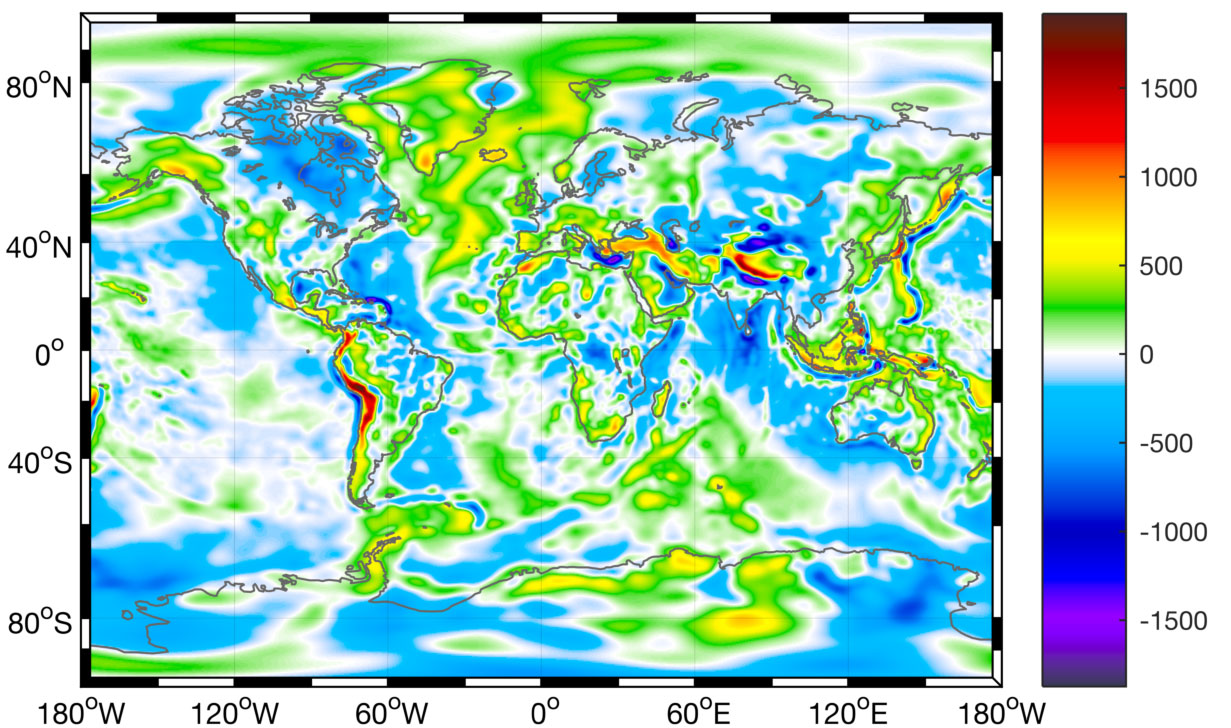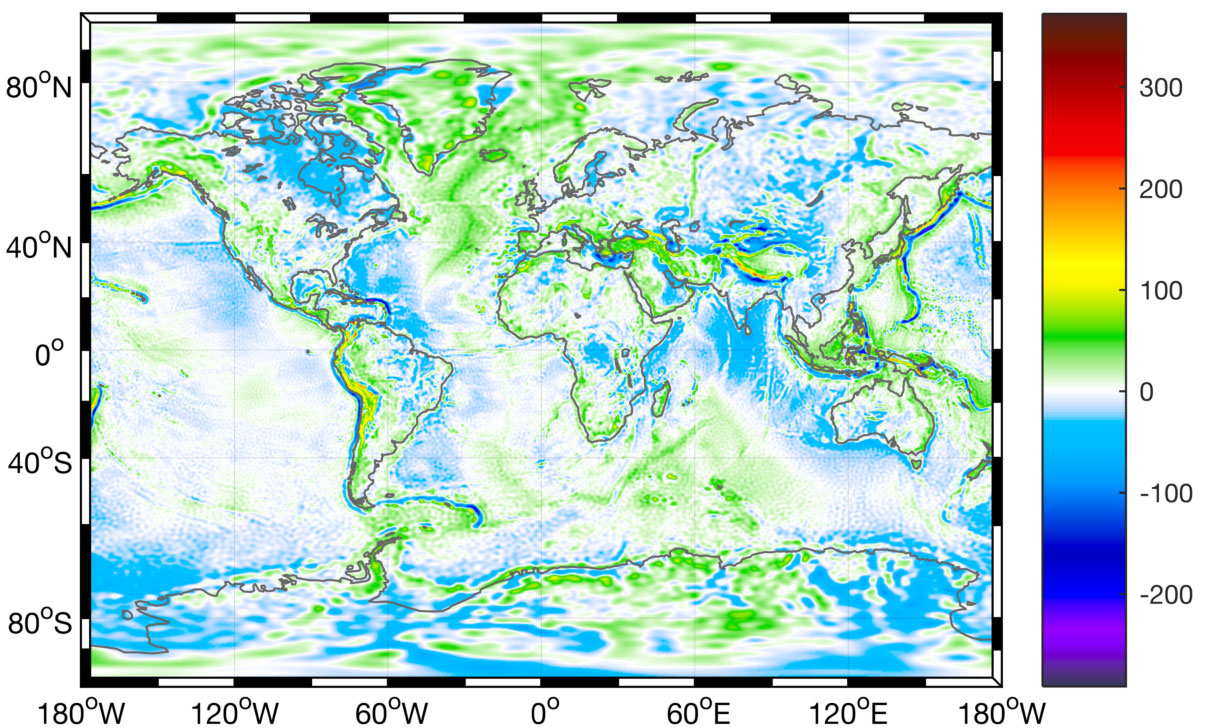…under construction…
GOCE gravity field products by means of the space-wise approach (release 5)
The space-wise approach is a method developed by Politecnico di Milano for the processing of the ESA-GOCE data. It is based on a gridding by least squares collocation (LSC) locally adapting the signal spatial correlation and considering the noise time correlation of the on-board gradiometer. The aim of the approach is to better recover the local content of the GOCE data at the cost of a lower level of global regularisation.
Available grid products:
All these products can be downloaded from ESA website (soon).
- Locally regularised spherical grids of 6600km of radius (altitude of ~221.86 km with respect to the Earth radius ~6378.14 Km) of the full Marussi tensor. Grid values are referred to the center of the grid cell (identified by spherical coordinates) and are given in Eötvös units.

Spherical grid @(r = 6600km, altitude ~221km) of Trr [mE]
- Ellipsoidal grids at 10km above the WGS84 ellipsoid of Trr and Δg (in spherical approximation) computed by combining GOCE and GRACE data (ITSG 2014S model). Grid values are referred to the center of the grid cell (identified by geodetic coordinates).

Grid of Dg (spherical approximation) @10Km above WGS84 ellipsoid [mGal]
Available spherical harmonic coefficients sets:
- GOCE only globally regularized spherical harmonic coefficients with corresponding error coefficient variances (the full error covariance matrix will be soon available) – download
- Satellite only globally regularized spherical harmonic combining the space-wise GOCE-only solution with other models (ITSG 2014S, EIGEN 6C4 only up to degree and order 3) – the coefficients will be published soon
Processing procedure
The processing strategy used for the computation of the grid at the satellite level is the space-wise approach: a patch-wise least squares collocation with locally calibrated covariances. The GOCE-only spherical harmonic model is then retrived by the the analysis of those, coupled with a global regularisation based on Monte Carlo samples.
The grids at 10km are introducing informations from the GRACE model ITSG 2014S and are computed from the combination with the space-wise GOCE-only spherical harmonic model.
For more information check these pages:
- “The processing of the satellite grids and the GOCE-only spherical harmonic model”
- “The space-wise combined model and the ground level grids”
Grids comparisons
Space-wise grids (SPWG) can be compared with grids synthesised by spherical harmonics models.
We provides different comparisons to show pros and cons of the space-wise solution.
All the syntheses are computed at the maximum degree of 330, when a model is truncated at lower maximum degree coefficients are filled with zeros.
References:
- Computation and assessment of the fifth release of the GOCE-only space-wise solution
A. Gatti, M. Reguzzoni, F. Migliaccio, F. Sansò
Presented at the 1st Joint Commission 2 and IGFS Meeting, 19-23 September 2016, Thessaloniki, Greece - GOCE-only grids and spherical harmonic models by the space-wise approach from the full-mission dataset
A. Gatti, M. Reguzzoni, F. Migliaccio, F. Sansò
– in preparation - Optimal multi-step collocation: application to the space-wise approach for GOCE data analysis
M. Reguzzoni, N. Tselfes
Journal of Geodesy, January 2009, Volume 83, Issue 1, pp. 13-29